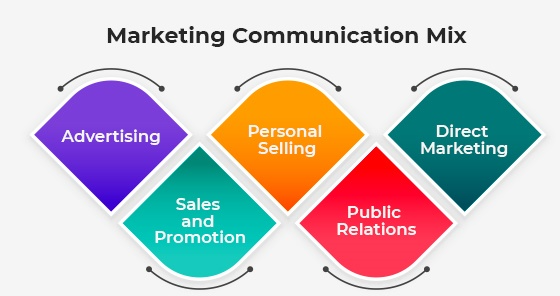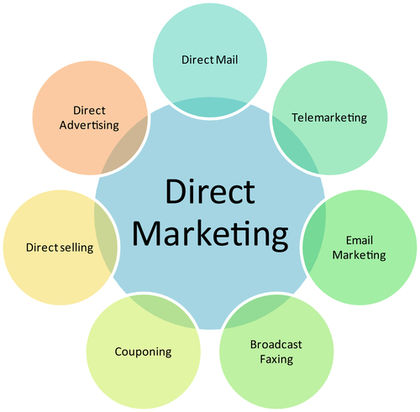Emirates
Emirates is the United Arab Emirates’ major airline organization and one of the country’s two official airlines. The airline is located in Garhoud, Dubai, and is part of The Emirates Group, which is controlled by the Dubai administration’s Investment Organization of Dubai. Emirates Airlines is one of the most well-known and essential airlines in the world. Concerning marketing and communication strategies and approaches, it is compulsory to emphasize how Emirates copes with customer segmentation issues. Airlines work with various types of clients, and the importance of comprehending variables in customer segmentation should be highlighted.
Marketing and Communication in Emirates
In Emirates, passengers and cargo flights are available, as well as first-class lounges, lavish facilities, locally themed food, and an award-winning entertainment system. Apart from the aforementioned, their marketing is also worth investigating since the airline employs a variety of traditional and innovative marketing strategies to acquire new customers and keep existing ones proud to fly Emirates. Marketing is vital for airlines since it enables management to carefully communicate their goods and services with a particular audience. Marketing aids in the acquisition, exchange, and mobility of products and services to make them accessible to clients through different advertising and promotion efforts.
Market segmentation, which separates massive groups of individuals into smaller categories in order to reach the target more quickly and effectively, is critical from a marketing standpoint. Market segmentation is the process of breaking a large consumer or company market, usually consisting of present and future customers, into sub-groups based on shared features. Emirates’ market segmentation aids the airline in developing responsive services that match the needs of its customers. Another advantage of segmenting and identifying the target market is the ability to develop the most successful and cost-effective marketing, advertising, and promotion tactics.
Segmentation in Emirates
Market segmentation was critical for Emirates Airlines to survive and lessen the impact of the COVID-19 disaster. It aided in the re-assessment of new prospects and the temporary conversion of passenger aircraft to freight transport. In addition, it is feasible to emphasize that Emirates became more flexible with ticket bookings and was the first airline to provide COVID-19 health insurance to all passengers. People recognize the value of using the services of a certain firm. Thus this decision might have a considerable influence on the number of tickets sold and customer retention, which is an important marketing factor.
A target audience is a set of people who have similar requirements or traits that a company is attempting to reach and serve. Corporations cannot satisfy everyone at the same time; they must prioritize and direct their marketing efforts accordingly. That is why accurate target group designation and categorization are substantially important. If the firms execute it correctly, they may be able to achieve economic stability as well as grow and extend into new areas. Emirates Airlines has also established a target market, which has aided the corporation in consistently increasing earnings since the executives focus on exact groups of customers.
Geographic segmentation separates the market into distinct geographic categories, including cities, towns, and nations. People from various areas may have different requirements, and offering a variety of things would be appealing. This type of segmentation is also used by Emirates Airlines in Europe, America, Australia, the Middle East, and Asia. They also tailor their services to match the needs and cultures of the people they serve. Despite this, the airline focuses primarily on business in the Middle East, Asia Pacific, and Africa. Emirates catering is an example of this segmentation since they produce cuisine that is inspired by the local culture.
Demographics is another essential aspect of segmenting clients into smaller target groups. The demographic strategy, which focuses on individuals’ age, life-cycle stage, gender, income, education, faith, occupation, and family, is the most popular among businesses. This segmentation is used by Emirates Airlines, which caters to working-class passengers. It means they are approximately in their forties and fifties, with families of their own, yet they can still purchase economy-class tickets. It is possible to highlight that Emirates should broaden the range of potential customer segments, but, at the same time, it is necessary to apply strict categorization.
People’s differing knowledge, attitudes, and responses to the product or usage are used to create behavioral segmentation. This type of segmentation is used by Emirates to target clients who enjoy premium and pleasant travel. In all three cabins, Emirates business class includes personal valet at the airport, in-flight entertainment, and high-standard amenities. Since Emirates Airlines is based in the Middle East, Muslim clients who fly to Mecca, Saudi Arabia, frequently select it. Emirates Airlines is sensitive to Muslim customers’ demands, so passengers may learn which direction to pray in and when to begin and end fasting throughout Ramadan.
Recommendations
Concerning the recommendations with justification for a new and improved communication mix for Emirates, it is obligatory to focus on each phase of the mix: advertising, personal selling, sales promotions, public relations, and direct marketing. In order to boost advertising performance, digital advertisers frequently employ innovative advertising-scheduling tactics, such as ad recurrence at the individual stage (Todri et al., 2020). When marketers utilize static rather than dynamic display commercials and change the display ad creatives, they can lessen displeasure elicitation as a consequence of repeated display advertising engagements (Todri et al., 2020). Thus, it is possible to propose the advancement of the design and schedule in digital advertising.

When a sales professional interacts with a potential customer to close a deal, this is known as personal selling. In general, salespeople can elaborate and write scripts for all or a specific component of the selling process. It is necessary to ask the customer to share any concerns he has about the product or service with an official. In this case, the communication process can eliminate the probability of risk occurrence and enhance selling results, for instance, in terms of sponsors and partners. Considering sales promotion, it can be suggested to use the technique related to lifestyle discounts, which is connected to customer segmentation.
The process of monitoring and releasing information from a person or a company to the general public in order to influence their public impression is known as public relations. Public relations include engaging with the target market in order to promote awareness of the firm, create and manage its reputation, and nurture consumer connections. Managers and employees should learn about the process of co-creating knowledge in multi-stakeholder initiatives for creativity and public relations (Ruoslahti, 2018). In fact, advanced theories of collecting and assessing knowledge for public relations can be recommended since, for example, COVID-19 significantly changed the airline sphere.

Finally, it is necessary to concentrate on direct marketing activities and recommendations. Depending on previous client transaction information, direct marketing allows organizations to identify clients who can be interested in service offerings. For direct marketing, a number of machine-learning methods are now in use (Petersen & Daramola, 2020). Scholars examine and suggest a hybrid paradigm that combines reinforcement learning, case-based understanding, and rule-based justification (Petersen & Daramola, 2020). In general, the recommendation should be devoted to the process of gathering and assessing relevant data, including customer information. It is proposed to improve learning and educational efforts in order to improve direct marketing operations. Finally, cost-effective marketing can be implemented from a financial perspective.
Bibliography
Petersen, R. & Daramola, O., 2020. Towards explainable direct marketing in the telecom industry through Hybrid Machine Learning. Computational Science and Its Applications – ICCSA 2020, 12254, pp.471–486.
Ruoslahti, H., 2018. Co-creation of knowledge for innovation requires multi-stakeholder public relations. Advances in Public Relations and Communication Management, pp.115–133.
Todri, V., Ghose, A. & Singh, P.V., 2020. Trade-offs in online advertising: Advertising effectiveness and annoyance dynamics across the purchase funnel. Information Systems Research, 31(1), pp.102–125.
